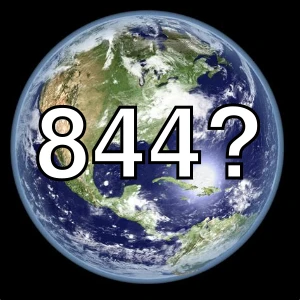The History of Toll-Free Numbers
The history of toll-free numbers dates back to the mid-20th century. In the United States, the concept of toll-free calling was first introduced in the 1960s.
 Toll-free numbers have been around for over 50 years, and they have become an essential part of the way we communicate with businesses. But how did they come about? And how have they changed over the years? You may be asking, where is area code 844, or where is area code 855? The answer is these toll-free area codes are available to most businesses in the US and Canada and have no geographic distinction.
Toll-free numbers have been around for over 50 years, and they have become an essential part of the way we communicate with businesses. But how did they come about? And how have they changed over the years? You may be asking, where is area code 844, or where is area code 855? The answer is these toll-free area codes are available to most businesses in the US and Canada and have no geographic distinction.
The Early Days of Toll-Free Numbers
The first toll-free numbers were introduced in the United States in 1967 by AT&T. These numbers were called "InWATS" numbers, and they were originally only available for businesses that had a large volume of long-distance calls.
InWATS numbers were a big improvement over the previous system of collect calling. With collect calling, the caller would have to pay for the call, even if the person they were calling was on the other side of the country. This made it difficult for businesses to attract customers from outside their local area.
The Rise of Toll-Free Numbers
Toll-free numbers quickly became popular with businesses, and by the early 1970s, they were available to businesses of all sizes. This helped to make it easier for businesses to reach customers from all over the country, and it also helped to reduce the cost of long-distance calling for consumers.
In 1985, the North American Numbering Plan (NANP) was created. This plan standardized the way that toll-free numbers were assigned, and it also created a new set of toll-free prefixes: 800, 888, 877, 866, and 855.
The Modern Era of Toll-Free Numbers
Today, toll-free numbers are used by businesses of all sizes, from small businesses to Fortune 500 companies. They are also used by government agencies, non-profit organizations, and educational institutions. WestFax provides toll-free numbers for theirHIPAA Compliant Fax plans.
Toll-free numbers have become an essential part of the way we communicate with businesses. They are convenient for consumers, and they can help businesses to improve customer service and increase sales.
Current Toll-Free Numbers
The following are the current toll-free prefixes in the North American Numbering Plan:
- 800
- 888
- 877
- 866
- 855
- 844
These prefixes are all used for toll-free numbers in the United States, Canada, and over a dozen other countries and territories.
The Future of Toll-Free Numbers
It is likely that toll-free numbers will continue to be an important part of the way we communicate with businesses in the future. As technology advances, we may see new ways to use toll-free numbers, such as for video calling and mobile payments.
However, it is also possible that the way we use toll-free numbers will change. For example, we may see more businesses using vanity numbers, which are toll-free numbers that are easy to remember.
Only time will tell how toll-free numbers will evolve in the future. However, one thing is certain: they are an essential part of how we communicate with businesses today.
Here are some of the most widely used toll-free numbers today.
Best Toll-Free Numbers
- 1-800-GO-FEDEX — FedEx, the go-to multinational delivery service’s contact uses a vanity toll-free number with its name.
- 1-800-HURT-NOW — a toll-free line for personal injury attorneys. This number can help you connect with a personal injury attorney best suited for your case.
- 1-800-THRIFTY — Thrifty Car Rental’s customer service for online reservation help. Interestingly, their other toll-free contact number is 1-800-FOR-CARS.
- 1-800-SAFEAUTO - Safe Auto wrote a whole theme song around their 800 number.
- 1-800-GIANT-MEN— The Gentle Giant Moving Company inserts its name creatively in its business number to market its brand, emphasizing that they are giants of the moving industry.
- 1-800-DOG-POOP — This pooper scooper service’s vanity toll-free number immediately grabs your attention!
- 1-800-GOT-JUNK? — You must have seen this vanity number displayed on vans and billboards across the street. This is a toll-free number for the world’s largest junk removal service.
- 1-800-IFLYSWA – This vanity number for Southwest Airlines is easy to remember.
- 1-877-KARS4KIDS – This might be the most annoying toll-free number ever. You can probably hear the jingle in your head right now. They reported spending over $15M annually getting this jingle to stick.
Other Popular Toll-Free Numbers
Besides the above, here are some other common toll-free numbers that you may have used from time to time:
- 1-888-BBT-ONLINE
- 1-800-WALGREENS
- 1-800-CALL-LEE
- 1-800-FLOWERS
- 1-800-TAXI-USA
- 1-888-BEST-BUY
- 1-800-T-MOBILE
- 1-888-SANDALS and many more
Conclusion
Toll-free numbers have come a long way since their introduction in the 1960s. They have become an essential part of the way we communicate with businesses, and they are likely to continue to be an important part of our lives in the future.
To view a map of the US with all active area codes you can visit the WestFax Area code map here.
Since 1999 WestFax has been available by calling toll-free at 1-800-473-6208.


